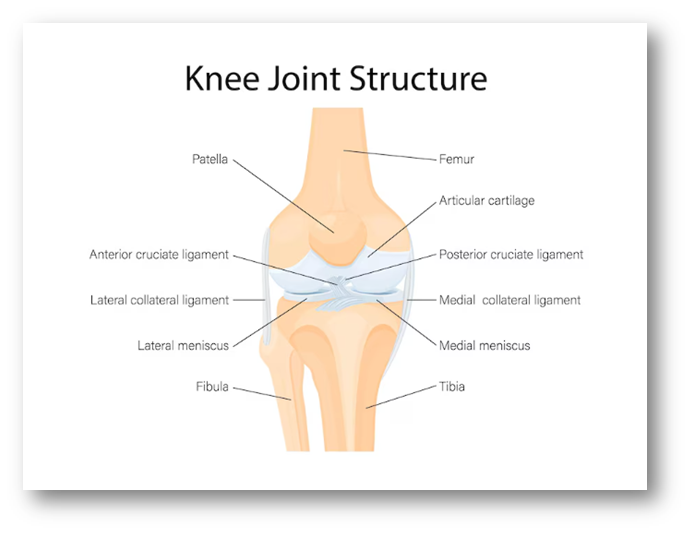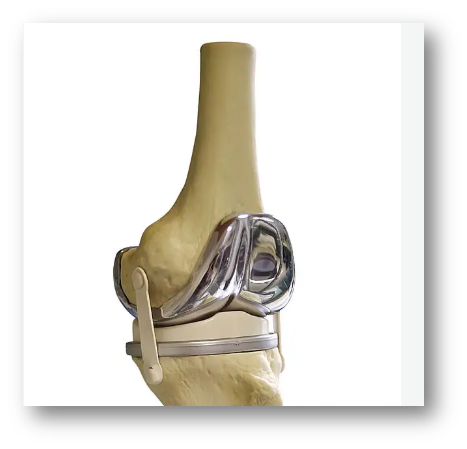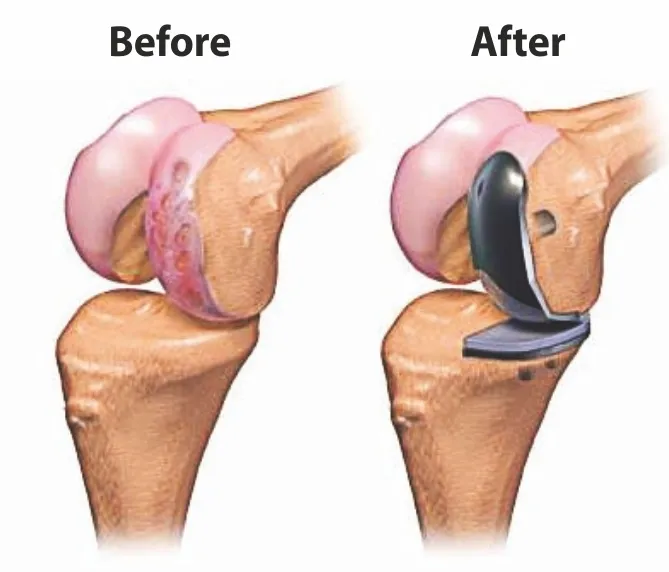
Being cautious about your decision to get operated on for knee replacement surgery is mandatory. It is a known fact that any surgical procedure can have a huge impact on your life, be it physically or socially. Some of the common reasons for knee replacement implant surgeries are bone-related aging illnesses, accidental injuries, and intense physical activities. All these causative factors are unavoidable, given our lifestyle and routine.
As a result, it is always better to stay informed and well aware of the medical technicalities related to knee replacement surgery. This blog aims to help readers answer the most common question: Why choose total knee replacement over partial knee replacement surgery? Gaining this information prior can contribute to satisfactory decision-making and keep you assured of the desired result.
Surgery Based on Anatomy of a Knee Joint

Our knee joint comprises three compartments – outer (lateral), inner (medial), and under the kneecap (patellofemoral). Any of these compartments can certainly get injured due to various etiological reasons causing orthopedic surgery. Given the fact that a joint is fused by ligaments and cartilaginous tissue, these compartments can be removed and replaced by surgery individually or wholly.
Henceforth, as the name implies, total knee replacement surgery means the removal of the entire knee joint and replacing it with high-quality total knee replacement implants. Likewise, partial (unicondylar) knee replacement surgery involves the surgical replacement of a single compartment of the knee joint.
However, there are many factors that one must consider before deciding on which is an appropriate procedure for their condition. So, continue reading!
Total Knee Replacement (TKR)
Total knee replacement surgery, also known as total knee arthroplasty is a surgical procedure in which the painful and poorly functioning knee joint is incised surgically to replace with artificial knee prosthesis. If the surgeon has advised you of a TKR, then it is because your knee is completely damaged due to arthritis or any severe external trauma.
Who is the ideal patient for TKR?
Osteoarthritis is one of the most common indications as it causes thinning of cartilage which reduces easy mobility of knee joints and causes excruciating pain. However, some other cases wherein, implant replacement is recommended include:
-
Rheumatoid arthritis is a chronic autoimmune disease that can cause inflammation of the synovial membrane which encapsulates the knee joint leading to stiff and swollen knee joints.
-
A severe knee injury caused by a heavily impacted external force.
-
Knee deformity, such as bow legs.
What is the Total Knee Replacement Surgical Procedure?
In this surgical process, the surgeon removes the worn-off medial, lateral, and patellofemoral parts of the knee joint. The bone is then prepared for placement of the knee replacement implants which consist of femoral, tibial, and patellar components. This metallic Implant attached to the bone using cement. A plastic insert is placed between the metal components to allow their smooth gliding movements.
After this is completed, an X-ray is done to ensure proper positioning of the implants to avoid any surgical revision and complications.

Partial Knee Replacement (PKR)
Partial Knee Replacement surgery is also called Unicompartmental/Unicondylar knee replacement surgery, as in this method only one part of the knee joint is removed. It is only advisable to the patients who have their knee ligaments and tissues in healthy condition. The rest of the knee joint can be preserved in this type of surgical procedure.
Who is the ideal patient for PKR?
Given the treatment approach of PKR, an ideal patient for a partial knee replacement surgery should have arthritis confined to only one compartment. Also, if arthritis starts aggravating, then this procedure can prove to be unsatisfactory.
In case of injuries and trauma, this procedure is recommended only after proper inspection of the extent of damage caused to the knee joint. It is after complete diagnosis and analysis, that a surgeon recommends PKR since any type of negligence can lead to repeated surgery.
What is a Partial Knee Replacement Surgical Procedure?
The surgical procedure for partial knee replacement lasts only for one to two hours. An incision is made at the front of the knee to gain access to the knee joint. The knee compartments are then inspected for damage individually, to ensure that it is restricted to just one compartment. The bone is prepared by removing the damaged surface of the compartment, and the prosthesis is fitted on it with cement. The plastic insert is placed on the implant to allow knee joint movements without any obstruction. Hereafter, the surgical incision is sutured and bandaged for recovery.

Why is Total Knee Replacement Preferred?
Both surgical procedures have different severity of indications, treatment approaches, and prognosis rates associated with them. Thus, it is always crucial to decide under the guidance of an expert orthopedic surgeon, or you can also consult with an authoritative manufacturer of knee replacement implants.
Below, we have listed a few reasons that suggest that total knee replacement can be a better option when compared to partial knee replacement.
-
Completed Relief from Knee Discomfort: TKR provides a solution by replacing the entire damaged knee joint with a total knee replacement implant with surgery performed by an expert surgeon. A successful surgery guarantees a healthy physical well-being and a happy social life.
-
Long-lasting Results: As per reports, in around 82% of cases, high-quality biomedical knee prostheses lasted up to 25 years and thereafter. This concludes that a TKR is a safe and durable medical treatment for most of the candidates.
-
Recommended for Various Knee Joint Disorders: There is a broader range of candidates, who are ideal for TKR, be it arthritis, knee deformity since birth, accidental injuries, or heavy-impact fall trauma to the knee joint.
-
Minimal Chances of Disease Progression: Once the damaged knee joint is incised and replaced with an artificial CO. CR, titanium, SS-316LVM, UHMWPE, Highly Cross Link Poly (XLPE), Vitamin-E Poly based implant; there is a negligible chance of disease recurrence or aggravation. However, in the case of PKR, there are chances that if the rest of the compartments develop arthritis, then a revision surgery to TKR needs to be performed urgently.
-
Lesser Revision Rates: When knee replacement surgery is performed by an expert surgeon using an excellent orthopedic implant, there is no chance of revision, unlike PKR. However, it is also important for the patient to stay diligent towards the post-operative management tips to promote proper recovery.
-
Healthier Lifestyle: A pain-free life and the ability to move freely without any dependence – are two factors that contribute to a healthy and happy well-being. TKR, with its 90-95 percent success rate and proven durability promises the patients a better life.
Summary
Selecting between total knee replacement and partial knee replacement is a choice to be made after assessing various factors that are specific to every patient. These procedures are certainly appropriate for their respective candidates, but the right one for you depends on the extent of damage. However, the damage should be analyzed after determining its impact on both your present and future aging-related health conditions.
If there is any experience or view that you wish to share with us, then please do mention it in the comments!